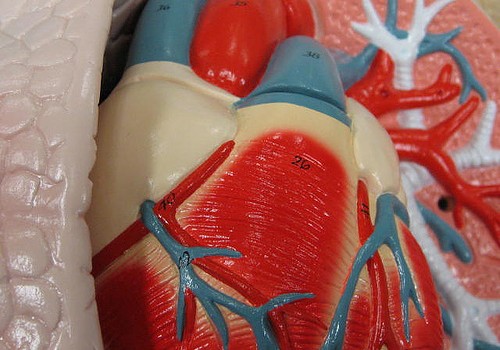
Cystic Fibrosis
Cystic fibrosis is caused by the malfunction of the CFTR gene. This gene is supposed to produce a form of protein that controls the movement of water and salts in our body. This defected gene causes the formation of very thick mucus in the lungs. The sweat of people with this condition is also highly concentrated with salts. This disease is most common among Caucasians with North European ancestry. It is believed that more than 10 million Americans are carriers of Cystic Fibrosis. There is a high possibility that most of them are not even aware of it. The first signs of this disease in newborn babies include a salty taste of the skin (when kissed) and difficulty in passing the first stool. This disease can affect sinuses, lungs, skin, liver, pancreas, intestines and reproductive systems. People suffering from cystic fibrosis are at an increased risk of developing sinusitis, bronchitis, pneumonia, indigestion, upset bowel movements, pancreatitis, rectal prolapse, gall stones, liver diseases and diabetes. Males suffering from Cystic fibrosis are born infertile as they lack a tube that transports sperm from the testes to the penis. Females with this disease can often have difficulty getting pregnant due to a number...
Cystic fibrosis is caused by the malfunction of the CFTR gene. This gene is supposed to produce a form of protein that controls the movement of water and salts in our body. This defected gene causes the formation of very thick mucus in the lungs. The sweat of people with this condition is also highly concentrated with salts. This disease is most common among Caucasians with North European ancestry. It is believed that more than 10 million Americans are carriers of Cystic Fibrosis. There is a high possibility that most of them are not even aware of it. The first signs of this disease in newborn babies include a salty taste of the skin (when kissed) and difficulty in passing the first stool. This disease can affect sinuses, lungs, skin, liver, pancreas, intestines and reproductive systems. People suffering from cystic fibrosis are at an increased risk of developing sinusitis, bronchitis, pneumonia, indigestion, upset bowel movements, pancreatitis, rectal prolapse, gall stones, liver diseases and diabetes. Males suffering from Cystic fibrosis are born infertile as they lack a tube that transports sperm from the testes to the penis. Females with this disease can often have difficulty getting pregnant due to a number of reasons. Treatment of this disease mainly involves trying to keep the body from building up mucus and treating the secondary diseases as they might occur. Having a good knowledge of any medical condition, which you might have, is the best way to prevent it from causing any significant harm.
- Important notification about information and brand names used in this slideshow!
- Photo courtesy of GreenFlames09 by Flickr : www.flickr.com/photos/greenflames09/74297012/
- www.activebeat.com/your-health/children/the-10-most-common-genetics-disorders/
- http://www.atlasdna.co.uk/what-are-the-most-common-genetic-disorders/
- http://www.education.com/reference/article/chromosomal-genetic-disorders/?page=4
- http://www.blisstree.com/2006/09/07/mental-health-well-being/ten-most-common-inherited-genetic-diseases/

Huntington’s Disease
This is an autosomal dominant disorder, which means that inheriting one mutant gene is enough to develop this disease. One in every 2000 babies born in the UK are affected by this genetic disorder. Mutations in the HTT gene are the reason why people at later stages of their lives (35 to 50 yrs. of age) begin to develop this disease. The HTT gene is responsible for production of a protein known as Huntington. This protein plays an essential role in the functioning of neurons. The clinical symptoms of this disease consist of behavioral problems (mood changes, paranoia, hallucinations), involuntary muscular movements (sudden twitching or jerky movements of eyes, limbs, head or other body parts), dementia (disorientation, short term memory loss, altered personality). CT scan, MRI scan and PET scan of the brain can be used to diagnose and spot the degenerated brain tissue. Huntington's Disease is incurable and irreversible. The medication used to treat this condition aims to reduce the symptoms, for example decreasing the frequency and severity of involuntary movements or emotional and behavioral changes.
- Important notification about information and brand names used in this slideshow!
- Photo courtesy of APC Events by Flickr : www.flickr.com/photos/apcevents/5685594494/
- Brinkman R.R, Meizei M.M, Theilmann J, Almqvist E and Hayden M.R (1997). Likelihood of Being Affected with Huntington Disease by a Particular Age for a Specific CAG Size. American Journal of Human Genetics, 60: 1202-1210. U.S National library of medicine: http://www.nlm.nih.gov/medlineplus/ency/article/000770.htm U.S National library of medicine: http://ghr.nlm.nih.gov/condition/huntington-disease

Down Syndrome
Down Syndrome is a very common chromosomal disorder with an incidence rate of 1 in every 1000 births all around the world (WHO). Chromosomal disorders are caused by duplication, deletion or deformation of a chromosome among the standard 23 pairs of chromosomes. Such abnormality in chromosomal structure or numbers is usually caused while the process of meiosis (a kind of cellular division) is taking place during the formation of egg or sperm cells. In most cases of Down Syndrome, an extra copy of chromosome 21 is present in the cells. This condition is irreversible and incurable. However, there are diagnostic tests available, which can indicate if the unborn baby has this disorder or not. It is understood that the risk of having babies with Down Syndrome increases with maternal age, especially after the age of 40 yrs (Females are born with all the eggs they ever produce in their life span, therefore, their eggs also age with them). Numerous research studies have concluded that individuals with this condition are at an increased risk of developing heart defects, breathing difficulties like asthma and conditions related to digestion, hearing and thyroid gland. Each individual with this syndrome has different levels of learning...
Down Syndrome is a very common chromosomal disorder with an incidence rate of 1 in every 1000 births all around the world (WHO). Chromosomal disorders are caused by duplication, deletion or deformation of a chromosome among the standard 23 pairs of chromosomes. Such abnormality in chromosomal structure or numbers is usually caused while the process of meiosis (a kind of cellular division) is taking place during the formation of egg or sperm cells. In most cases of Down Syndrome, an extra copy of chromosome 21 is present in the cells. This condition is irreversible and incurable. However, there are diagnostic tests available, which can indicate if the unborn baby has this disorder or not. It is understood that the risk of having babies with Down Syndrome increases with maternal age, especially after the age of 40 yrs (Females are born with all the eggs they ever produce in their life span, therefore, their eggs also age with them). Numerous research studies have concluded that individuals with this condition are at an increased risk of developing heart defects, breathing difficulties like asthma and conditions related to digestion, hearing and thyroid gland. Each individual with this syndrome has different levels of learning disabilities and therefore, require extra care, attention and in most cases physiotherapy.
- Important notification about information and brand names used in this slideshow!
- Photo courtesy of ambertq by Flickr : www.flickr.com/photos/ambertq/2964277861/
- National human Genome Research Institute http://www.genome.gov/11508982 NHS UK http://www.nhs.uk/Conditions/Downs-syndrome/Pages/Introduction.aspx WHO http://www.who.int/genomics/public/geneticdiseases/en/index1.html Dieckmann KP, Rübe C, Henke RP (1997). Association of Down's syndrome and testicular cancer. J Urol. 157(5):1701–1704 Tüysüz B, Beker DB (2001). Thyroid dysfunction in children with Down's syndrome. Acta Paediatr. 90(12):1389–1393 Van Goor JC, Massa GG, Hirasing R (1997). Increased incidence and prevalence of diabetes mellitus in Down's syndrome. Arch Dis Child. 77(2):186–186
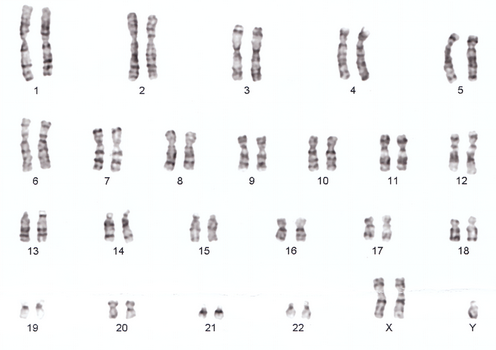
Klinefelter Syndrome
This is the most common chromosomal disorder (1 in 500-1000). It mostly stays undiagnosed due to inadequate professional awareness and variation in its clinical presentation. Klinefelter Syndrome is responsible for the majority of male infertility cases around the globe. A normal male should have XY sex chromosomes. In Klinefelter Syndrome, extra X chromosomes are present and the genotype becomes XXY, XXXY or XX/XXY. Klinefelter Syndrome is not life threatening. In severe cases, the symptoms include high-pitched voice, enlargement of breast and small prostate gland and testes. Inadequately sized testes cause lesser production of testosterone. If diagnosed on time, males suffering from this disorder can start receiving testosterone therapy on reaching puberty. Testosterone treatment helps to improve their mood, muscle outlook, sex drive and also helps in growing body hair. Most patients are capable of sexual activity i.e. erection and ejaculation. They also produce sperm, but many don't produce enough to conceive.
- Important notification about information and brand names used in this slideshow!
- Photo courtesy of Nami-ja by Wikimedia Commons : en.wikipedia.org/wiki/File:Human_chromosomesXXY01.png
- U.S National Library of Medicine http://www.ncbi.nlm.nih.gov/pubmedhealth/PMH0001420/ Bojesen A, Juul S and Gravholt GH. Prenatal and Postnatal Prevalence of Klinefelter Syndrome: A National Registry Study. The Journal of Clinical Endocrinology & Metabolism February 1, 2003 vol. 88 no. 2 622-626 National Human Genome Research Institute http://www.genome.gov/19519068 Nahata L, Rosoklija L, Yu RN and Cohen LE (2013), Klinefelter Syndrome, Are We Missing Opportunities for Early Detection?, CLIN PEDIATR October 2013 vol. 52 no. 10 936-941
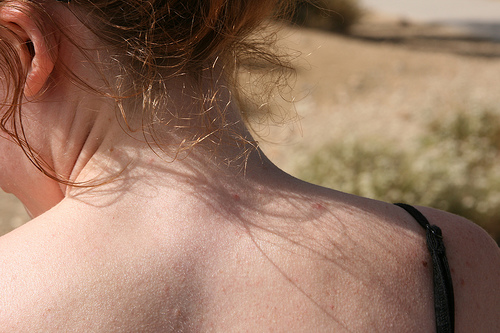
Turner Syndrome
This is also a sex specific syndrome and causes disruptions in female development. The incidence rate of this syndrome is 1 in every 2500 baby girls born around the world. It is much more frequently detected in stillbirths. We know that a healthy female has XX sex chromosomes, but in this condition, the female only has one sex chromosome X or the second sex chromosome is deformed. This disorder is usually the result of random error during the formation of eggs or sperm. Almost 50 percent of females with this condition have heart defects. Other common clinical presentations of this disorder include short height, extra skin folds on he neck, swollen hands and feet and problems with kidney and skeletal functions and structure. In most cases, ovarian function is lost even before birth due to which the girls do not undergo puberty. There is no cure for this condition. However, hormonal therapy (Somatropin, Estrogen and Progesterone) can help develop the growing girls and improve their physical appearance. Later on, assisted fertilization and conception can also be achieved, only if advised by medical specialists.
- Important notification about information and brand names used in this slideshow!
- Photo courtesy of Quinn Dombrowski by Flickr : www.flickr.com/photos/quinnanya/2606271222/
- Lyon AJ, Preece MA and Grant DB (1985). Growth curve for girls with turner syndrome. Arch Dis Child, 60: 932-935 Pelz L, Timm D, Eyermann E, Hinkel GK, Kirchner M, Verron G (1982). Body height in Turner's syndrome. Clinical Genetics, 1982
- 22:62-66. Lenko HL, Perheentupa J, Soderholm A. (1979). Growth in Turner's syndrome: spontaneous and fluoxymesterone stimulated. Acta Paediatr Scand, 227:57-63 U.S national library of Medicine: http://ghr.nlm.nih.gov/condition/turner-syndrome
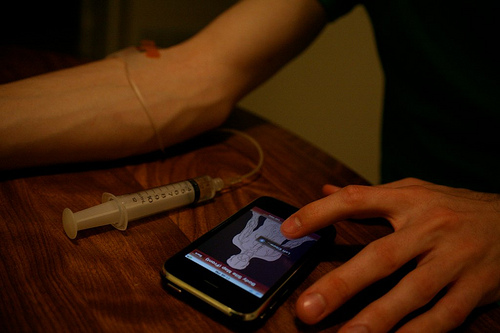
Hemophilia
Hemophilia is an X chromosome-linked genetic disorder. The genes responsible for the production of factor VIII and factor IX are located on X chromosome. These two factors are crucial for giving clotting ability to human blood. We know that the sex chromosomes are XX in a female and XY in a male, so a male can never be a carrier of this disease. Whenever a male inherits an X chromosome with genes of hemophilia, he will have this disease. Only females can be carriers of hemophilia because if they inherit one faulty X chromosome from one of their parents then the other healthy X chromosome (sex chromosome) that they have can compensate for the lacking clotting factors. If both parents have this disease, then the children are bound to inherit it. People with hemophilia simply bleed for a comparatively longer time, depending on the severity of their condition. Mild cases of hemophilia are usually found in children and diagnosed after prolonged bleeding due to significant wound, surgical procedure or something like a tooth extraction. Mild hemophilia can cause internal bleeding (after bumps and knocks) in joints, which if not treated, can cause swelling, pain, stiffness and redness of joints. Severe...
Hemophilia is an X chromosome-linked genetic disorder. The genes responsible for the production of factor VIII and factor IX are located on X chromosome. These two factors are crucial for giving clotting ability to human blood. We know that the sex chromosomes are XX in a female and XY in a male, so a male can never be a carrier of this disease. Whenever a male inherits an X chromosome with genes of hemophilia, he will have this disease. Only females can be carriers of hemophilia because if they inherit one faulty X chromosome from one of their parents then the other healthy X chromosome (sex chromosome) that they have can compensate for the lacking clotting factors. If both parents have this disease, then the children are bound to inherit it. People with hemophilia simply bleed for a comparatively longer time, depending on the severity of their condition. Mild cases of hemophilia are usually found in children and diagnosed after prolonged bleeding due to significant wound, surgical procedure or something like a tooth extraction. Mild hemophilia can cause internal bleeding (after bumps and knocks) in joints, which if not treated, can cause swelling, pain, stiffness and redness of joints. Severe hemophilia can result in spontaneous bleeding not only in joints but also in gums, nose, skull and other organs. This requires surgical intervention in most cases. Preventive treatment of this condition includes regular injections of scientifically engineered clotting factors.
- Important notification about information and brand names used in this slideshow!
- Photo courtesy of Michael Schultz by Flickr : www.flickr.com/photos/michaelwschultz/4448739247/
- National heart lung and Blood institiute http://www.nhlbi.nih.gov/health//dci/Diseases/hemophilia/hemophilia_signs.html NHS UK: www.nhs.uk/Conditions/Haemophilia/Pages/Symptoms.aspx

Familial Combined Hyperlipidemia
This disorder is also known as multiple lipoprotein-type hyperlipidemia. It is the most common genetic disorder in the UK and has an incidence of 5 in 1000 births. The condition runs down through families and is characterized by high levels of cholesterol and triglycerides. Researchers do not have exact knowledge about the gene that causes this disorder. Individuals who have diabetes, alcohol misuse issues, thyroid problems and heart conditions are at high risk of heart attacks and strokes. Regular visits to your physician and blood tests for LDL, HDL, Triglycerides and Apolipoprotein B100 are essential for diagnosing and monitoring this condition. Treatment for this disorder requires dietary changes (reduced consumption of beef, chicken, pork and lamb. Use a low fat diet and avoid palm oil and increase physical activity. The medications for this condition lower cholesterol and triglyceride levels and prevent blockages in blood vessels.
- Important notification about information and brand names used in this slideshow!
- Photo courtesy of Reggie Bibbs by Flickr : www.flickr.com/photos/reggiebibbs/477708558/
- Mario J. Veerkamp, Jacqueline de Graaf, Sebastian J.H. Bredie, Jan C.M. Hendriks, Pierre N.M. Demacker, Anton F.H. Stalenhoef (2002). Diagnosis of Familial Combined Hyperlipidemia Based on Lipid Phenotype Expression in 32 Families. Arteriosclerosis, Thrombosis, and Vascular Biology. 22: 274-282. Bonow RO, Mann DL, Zipes DP, Libby P, (2011). Braunwald's Heart Disease: A Textbook of Cardiovascular Medicine. 9th ed. Philadelphia: Saunders Elsevier Adam Medical Encyclopedia: http://www.ncbi.nlm.nih.gov/pubmedhealth/PMH0001433/ Sniderman A, Shapiro S, Marpole D, Skinner B, Teng B, Kwiterovich P.O (1980), Association of coronary atherosclerosis with hyperapobetalipoproteinemia [increased protein but normal cholesterol levels in human plasma low density (beta) lipoproteins]. Proc Natl Academic Science, 77: 604–608.
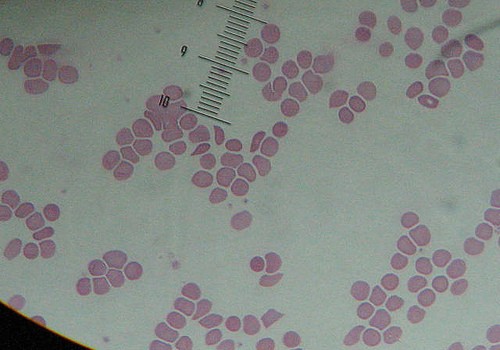
Bloom's Syndrome
This male-specific genetic abnormality is only common in people of Ashkenazi Jewish descent. At least one third of all affected individuals are of this specific Jewish background. Mutations in the BLM gene are responsible for causing this abnormality. This gene has the blueprints to produce an enzyme, which plays a vital role in unwinding the double helices of DNA during the process of cell division. It is an autosomal recessive abnormality, which means that the child has to inherit one mutated gene from each parent (carriers). In such a case, there is a 25% chance that a baby will develop this disorder. Affected individuals are extremely sensitive to sunlight and have a signifcantly increased risk of developing cancers and diabetes. Affected males have been reported to be infertile, and females to reach menopause earlier than usual. There is no cure or treatment for this condition. Regular medical checkups should be carried out to catch any signs of cancers and other diseases.
- Important notification about information and brand names used in this slideshow!
- Photo courtesy of GreenFlames09 by Flickr : www.flickr.com/photos/greenflames09/74296820/
- U.S National library of medicine: http://ghr.nlm.nih.gov/condition/bloom-syndrome Centre for Jewish Genetics: http://www.jewishgenetics.org/?q=content/blooms-syndrome Payne M, Hickson ID (2009), Genomic instability and cancer: lessons from analysis of Bloom's syndrome. Biochem Soc Trans, 37(Pt3): 553-559.

Fragile X-syndrome
Mutations in the FMR1 gene are responsible for causing Fragile X syndrome. The FMR1 gene is responsible for producing a protein which helps in developing synapses (connections between any two neurons). This gene is X-linked dominant and inheritance of a single gene on one chromosome is enough to cause this syndrome. This genetic disorder causes a number of different developmental issues and varying levels of learning disabilities. Males are usually more severely affected by this condition. Affected children usually have delayed speech and language development along with an intellectual disability. Other abnormal conditions which usually coexist along with fragile X syndrome include hyperactive behavior, anxiety or panic attacks, attention deficit disorder (ADD), autism and seizures. Physical features of individuals affected by this syndrome include an elongated facial appearance, prominent jawline, flat feet and enlarged testicles in males after puberty. There is no cure for Fragile X syndrome, only supportive treatments for coexisting conditions are available.
- Important notification about information and brand names used in this slideshow!
- Photo courtesy of Sadasiv Swain by Flickr : www.flickr.com/photos/sswain_1999/5990370831/
- Centre for Disease Control U.S: http://www.cdc.gov/ncbddd/fxs/index.html U.S. National library of medicine: http://ghr.nlm.nih.gov/condition/fragile-x-syndrome/show/MedlinePlus

Adult Polycystic Kidney Disease (PKD)
There are two versions of this disease — an autosomal recessive version (caused by the PKHD1 gene) and the an autosomal dominant (caused by PKD1 and PKD2). The difference between these two versions is that the dominant version of the disease develops between the ages of 20 to 30, while the recessive version of PKD starts showing its symptoms even before birth. PKD is one of the leading causes of kidney failure in the US, where at least 600,000 people suffer from this disease. In this disease, normal kidneys start developing fluid filled cysts. Due to the formation of these cysts the normal function of kidneys is altered. The clinical symptoms only consist of headaches and pain in the lower back, between lower ribs and hips. Autosomal dominant PKD usually coexists with complications such as high blood pressure, urinary tract infections, blood in urine, deformities of heart valves, kidney stones and bulges on the walls of blood vessels inside the brain. Treatment mainly focuses on relieving symptoms and delaying loss of all kidney functions. After kidney failure, only two options are available: getting regular hemodialysis or having a new kidney transplanted.
- Important notification about information and brand names used in this slideshow!
- Photo courtesy of kmh85 by Flickr : www.flickr.com/photos/carlgetinthehouse/2318323215/
- Simons, M and Walz G (2006). Polycystic kidney disease: cell division with a c(l)ue. Kidney International 70: 854–864. U.S National library of Medicine: http://www.nlm.nih.gov/medlineplus/ency/article/000502.htm






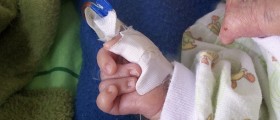


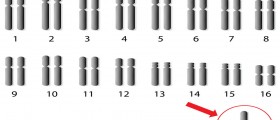


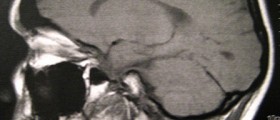




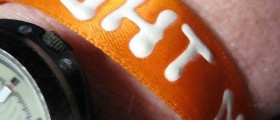
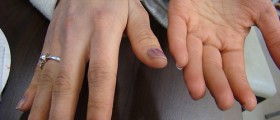
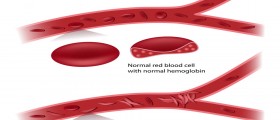






Your thoughts on this
Loading...